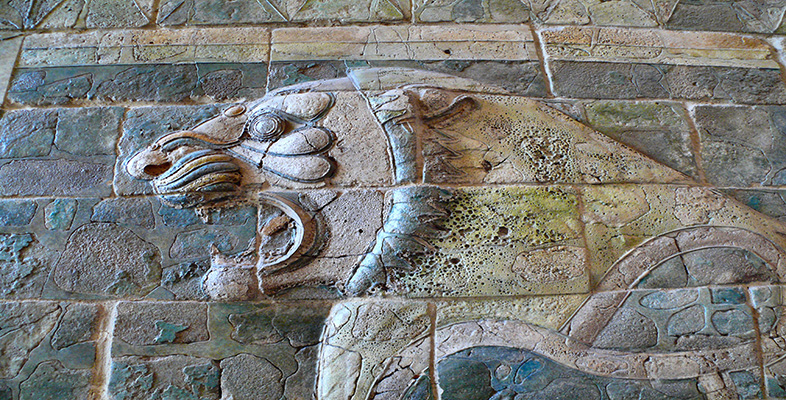Free courses
Produced by The Open University, a world leader in open and distance learning, all OpenLearn courses are free to study. We offer nearly 1000 free courses across 9 different subject areas. Our courses are available to start right away.
- Mathematics & Statistics
 free course icon
level 2: intermediate icon
free course icon
level 2: intermediate icon
Science, Maths & Technology
Bayesian statistics
This free course is an introduction to Bayesian statistics. Section 1 discusses several ways of estimating probabilities. Section 2 reviews ideas of conditional probabilities and introduces Bayes’ theorem and its use in updating beliefs about a proposition, when data are observed, or information becomes available. Section 3 introduces the main ...
 free course icon
level 1: introductory icon
free course icon
level 1: introductory icon
Science, Maths & Technology
Assessing risk in engineering, work and life
Risk is something that must be taken into account at all times when practising as an engineer. We accept risk as part of everyday life so there is a need to balance the risks of an activity against the benefits that it brings. This free course, Assessing risk in engineering, work and life, investigates how we can manage risks at work, in the ...
 free course icon
level 2: intermediate icon
free course icon
level 2: intermediate icon
Science, Maths & Technology
Babylonian mathematics
This free course looks at Babylonian mathematics. You will learn how a series of discoveries has enabled historians to decipher stone tablets and study the various techniques the Babylonians used for problem-solving and teaching. The Babylonian problem-solving skills have been described as remarkable and scribes of the time received a training ...
 free course icon
level 2: intermediate icon
free course icon
level 2: intermediate icon
Science, Maths & Technology
Modelling events in time
This free course develops ideas about probability and random processes. Sections 1 and 2 introduce the fundamental ideas of random processes through a series of examples. Section 3 describes a model that is appropriate for events occurring ‘at random’ in such a way that their rate of occurrence remains constant. Section 4 derives the main ...
 free course icon
level 2: intermediate icon
free course icon
level 2: intermediate icon
Science, Maths & Technology
Metric spaces and continuity
This free course contains an introduction to metric spaces and continuity. The key idea is to use three particular properties of the Euclidean distance as the basis for defining what is meant by a general distance function, a metric. Section 1 introduces the idea of a metric space and shows how this concept allows us to generalise the notion of ...
 free course icon
level 2: intermediate icon
free course icon
level 2: intermediate icon
Science, Maths & Technology
Rings and polynomials
This free course contains an introduction to rings and polynomials. We see that polynomial rings have many properties in common with the integers; for example, we can define a division algorithm, and this enables us to develop the analogue of the highest common factor for two polynomials. Section 1 explores the abstract definitions of a ring ...
 free course icon
level 2: intermediate icon
free course icon
level 2: intermediate icon
Science, Maths & Technology
Introduction to the calculus of variations
This free course concerns the calculus of variations. Section 1 introduces some key ingredients by solving a seemingly simple problem – finding the shortest distance between two points in a plane. The section also introduces the notions of a functional and of a stationary path. Section 2 describes basic problems that can be formulated in terms ...
 free course icon
level 3: advanced icon
free course icon
level 3: advanced icon
Science, Maths & Technology
Surfaces
Surfaces are a special class of topological spaces that crop up in many places in the world of mathematics. In this free course, you will learn to classify surfaces and will be introduced to such concepts as homeomorphism, orientability, the Euler characteristic and the classification theorem of compact surfaces.
 free course icon
level 2: intermediate icon
free course icon
level 2: intermediate icon
Science, Maths & Technology
Modelling and estimation
This free course is concerned with modelling and estimation and looks in particular at the binomial distribution. Section 1 starts by defining probability, introduces relevant notation and briefly discusses basic properties of probabilities. The section concludes by considering some of the general features of and ideas about modelling discrete ...
 free course icon
level 1: introductory icon
free course icon
level 1: introductory icon
Science, Maths & Technology
Introduction to algebra
This free course is an introduction to algebra which builds on the idea of using letters to represent numbers. Section 1 looks at finding, simplifying and using formulas and includes useful tips on learning algebra. Section 2 introduces some of the terminology used in algebra and techniques such as evaluating and checking equivalence of ...
 free course icon
level 2: intermediate icon
free course icon
level 2: intermediate icon
Science, Maths & Technology
Introduction to linear equations and matrices
In this free course, matrices are used as a concise way of representing systems of linear equations which occur frequently in mathematics. Section 1 looks at simultaneous linear equations in two and three unknowns and then generalises the ideas to systems of linear equations. Section 2 develops a strategy for solving systems of linear equations....
 free course icon
level 2: intermediate icon
free course icon
level 2: intermediate icon
Science, Maths & Technology
Introduction to group theory
This free course is an introduction to group theory, one of the three main branches of pure mathematics. Section 1 looks at the set of symmetries of a two-dimensional figure which are then viewed as functions. Section 2 introduces an algebraic notation for recording symmetries and calculating composites and inverses of symmetries. Section 3 ...